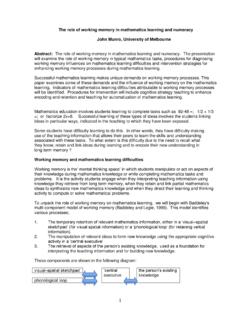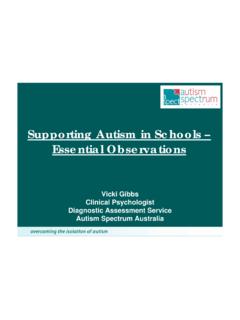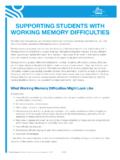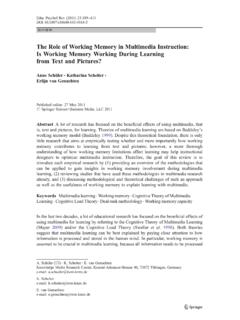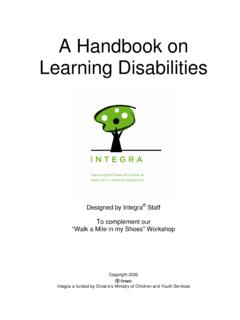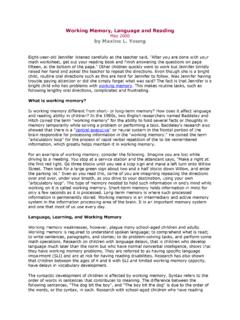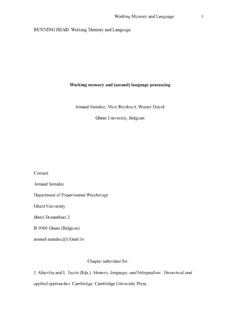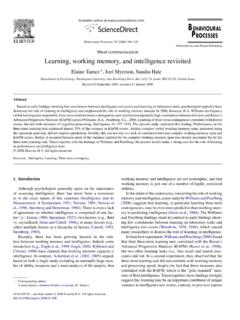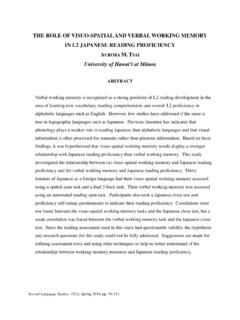Transcription of The role of working memory in mathematics learning and ...
1 The role of working memory in mathematics learning and numeracy John Munro, University of Melbourne Abstract: The role of working memory in mathematics learning and numeracy. The presentation will examine the role of working memory in typical mathematics tasks, procedures for diagnosing working memory influences on mathematics learning difficulties and intervention strategies for enhancing working memory processes during mathematics learning . Successful mathematics learning makes unique demands on working memory processes. This paper examines some of these demands and the influence of working memory on the mathematics learning .
2 Indicators of mathematics learning difficulties attributable to working memory processes will be identified. Procedures for intervention will include cognitive strategy teaching to enhance encoding and retention and teaching for automatization of mathematics learning . mathematics education involves students learning to complete tasks such as 92-48 =; 1/2 + 1/3. =; or factorize 2x+8. Successful learning of these types of ideas involves the students linking ideas in particular ways, indicated in the teaching to which they have been exposed.
3 Some students have difficulty learning to do this. In other words, they have difficulty making use of the teaching information that allows their peers to learn the skills and understanding associated with these tasks. To what extent is this difficulty due to the need to recall what they know, retain and link ideas during learning and to encode their new understanding in long term memory ? working memory and mathematics learning difficulties working memory is the' mental thinking space' in which students manipulate or act on aspects of their knowledge during mathematics knowledge or while completing mathematics tasks and problems.
4 It is the activity students engage when they interpreting teaching information using knowledge they retrieve from long term memory , when they retain and link partial mathematics ideas to synthesize new mathematics knowledge and when they direct their learning and thinking activity to compute or solve mathematical problems. To unpack the role of working memory on mathematics learning , we will begin with Baddeley's multi-component model of working memory (Baddeley and Logie, 1999). This model identifies various processes;. 1. The temporary retention of relevant mathematics information, either in a visual spatial sketchpad' (for visual spatial information) or a phonological loop' (for retaining verbal information).
5 2. The manipulation of relevant ideas to form new knowledge using the appropriate cognitive activity in a central executive'. 3. The retrieval of aspects of the person's existing knowledge, used as a foundation for interpreting the teaching information and for building new knowledge. These components are shown in the following diagram: visual spatial sketchpad' central the person's existing executive knowledge phonological loop 1. It seems intuitively reasonable to expect that successful mathematics learning would require students to make efficient use of their working memory .
6 It is perhaps not surprising for example, that the phonological loop is implicated in more tasks that involve strategy use based on counting down strategies for subtraction problems (Imbo and Vandierendonck, 2007) than in tasks that require single-digit multiplication recall from long-term memory (De Rammelaere et al., 2001). The central executive, on the other hand, usually has a greater role to play in the carry operation' in addition and multiplication than the phonological loop (Imbo et al., 2007). Following a comprehensive review of the research relating to mathematics and working memory , Raghubar, Barnes and Hecht (2010) agree, but with some caveats.
7 They note the complexity of this relationship and the likelihood that for any individual it will depend on a wide range of factors that influence how the individual interacts with the mathematics information (either the teaching information or the information specifying a problem or task). These include personal factors such as their age and skill level, mathematics content factors and characteristics of the learning . teaching context such the level of mastery being targeted (beginning, generalizing or automatizing), language of instruction and the formats in which the mathematics information presented.
8 They note the need for a sufficiently comprehensive model of mathematical processing, particularly in relation to skill acquisition, that can handle current findings on working memory as well as provide the basis from which to guide new discoveries and inform practice. (page 119) '. Children with math difficulties differ from their peers without difficulties in each aspect of their working memory processes; in verbal working memory , in static and/or dynamic visual spatial memory processing, in numerical working memory and in backward digit span tasks.
9 Given a lack of consistency across studies about how to measure the components of verbal and visual . spatial working memory , you can see various trends across the age span of school, for example, 1. executive and visual spatial memory processes are used more during learning new mathematical skills/concepts and the phonological loop processes after a skill has been learned. 2. longitudinal studies suggest that some executive processes may be more generic in terms of supporting learning , while others, such as visual spatial working memory may be more specific to early mathematical learning and verbal processes become more prominent at older ages 3.
10 Different aspects of working memory mediate different aspects of mathematical performance for dyscalculic children. 4. working memory is linked with other factors in mathematics learning such as students'. ability to use and focus their learning attention'. Dyslexic students frequently have difficulty investing attention in what they are learning (Fletcher, 2005; Zentall, 2007). They also have difficulty automatizing what they are learning so that, on later occasions, the knowledge makes a lower demand on thinking space. An understanding of which aspects of working memory are deficient in children with math difficulties is obscured by a lack of precision in knowing the particular strategies and processes that the child brings to bear on working memory tasks (possibly as a function of age and language) and a theory that links these working memory processes to particular aspects of mathematical learning and performance.
